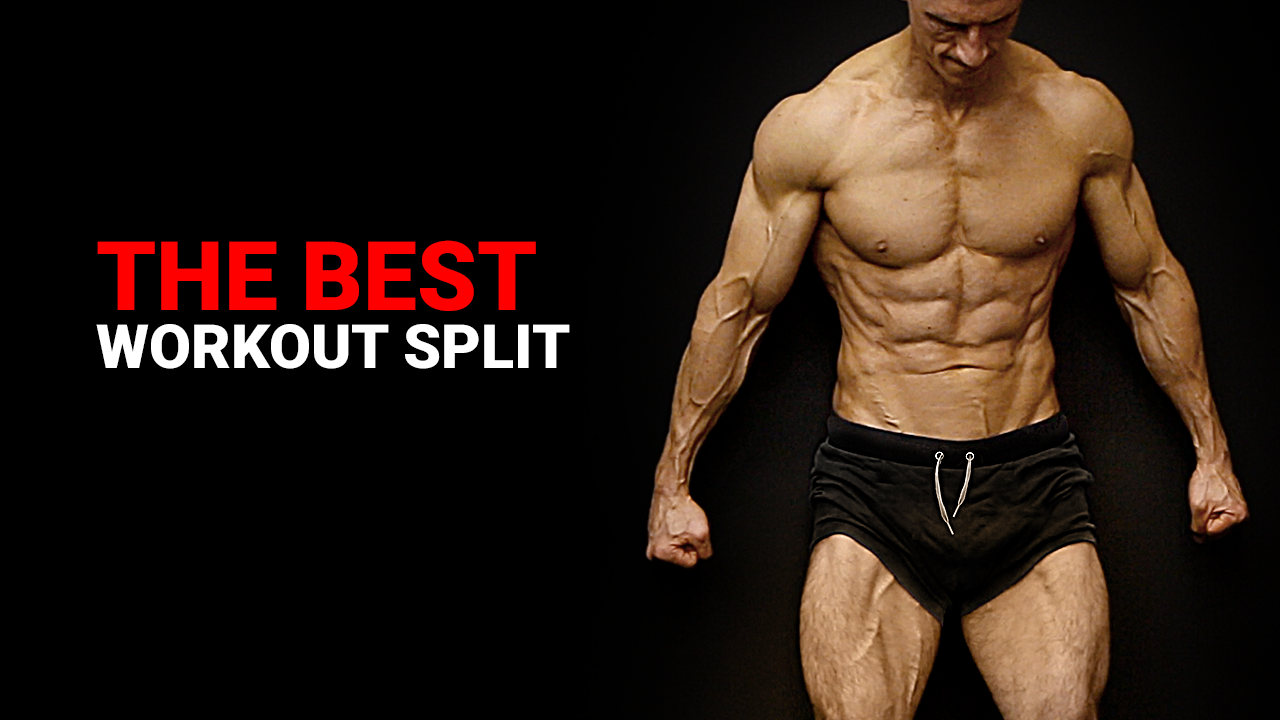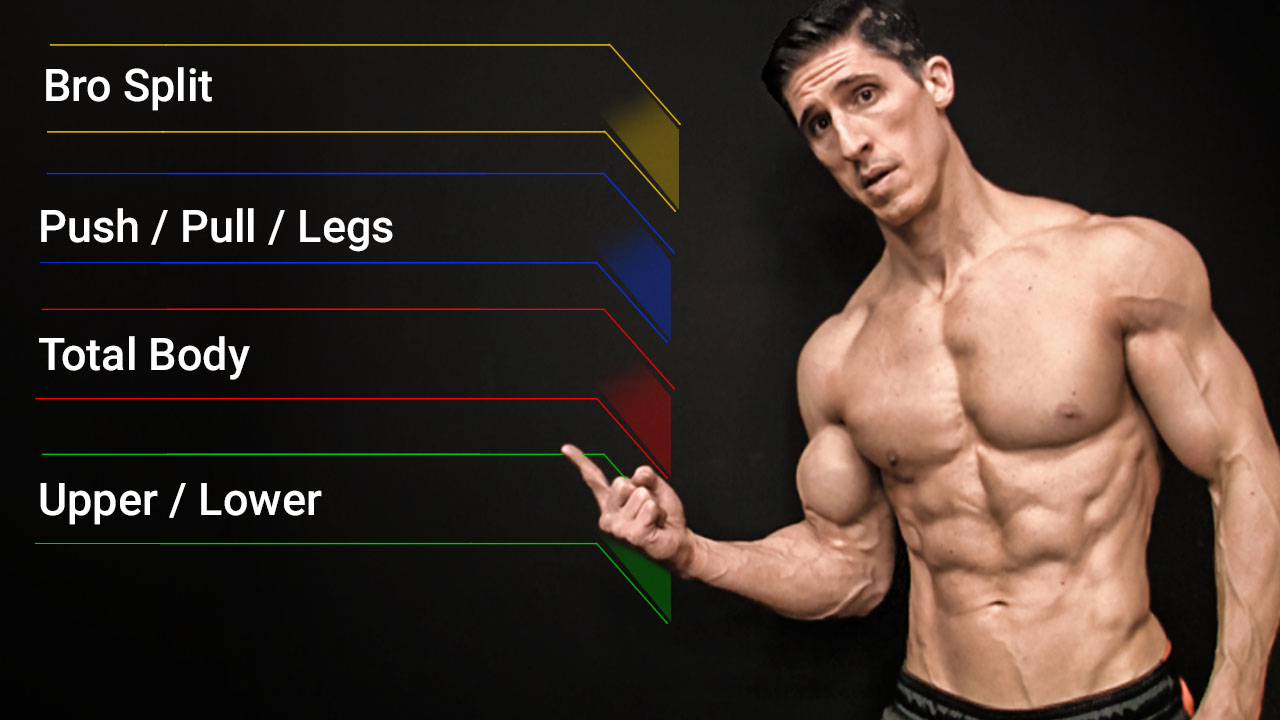Discover the essential components of an effective weight training program. Learn how to build strength, increase muscle mass, and optimize your workouts. An effective weight training program includes proper exercise selection, progressive overload, training frequency, and recovery. It balances intensity, volume, and rest to optimize muscle growth and strength.
Crafting an effective weight training program can be the cornerstone of achieving fitness goals. A well-structured regimen targets all major muscle groups, ensuring comprehensive development and preventing imbalances. Progressive overload remains a fundamental principle, meaning exercises gradually become more challenging to encourage strength gains.
Consistency in training frequency, typically 2-4 times per week, keeps muscles stimulated and promotes ongoing progress. Equally crucial is incorporating adequate rest and recovery, which allows muscle repair and growth. Planning workouts strategically not only maximizes efficiency but also reduces the risk of injury. By personalizing the program to individual needs, the approach becomes sustainable, paving the way for long-term success in weight training endeavors.

The Cornerstones Of Weight Training
Weight training is a journey towards strength, endurance, and muscle development. To succeed, certain elements must intertwine effectively, forming a robust training program. This post will delve into the essentials that shape the very foundation of an impactful weight training regime. Exploring these cornerstones, you’ll learn how to optimize every aspect of your workout for maximum results.
Key Principles For Muscle Growth
Muscle development hinges on several key principles. Understanding these is crucial for anyone looking to build strength and size. Here’s a snapshot of these principles:
- Overload: Push your muscles beyond their comfort zone.
- Recovery: Allow time for muscles to repair and grow.
- Nutrition: Supply your body with the right fuel for recovery and growth.
- Variety: Switch up exercises to target muscles from different angles.
- Specificity: Focus on training goals for tailored muscle growth.
Importance Of Consistency And Progression
To turn weight training into effective muscle mass, you must stay the course. Consistency ensures your muscles face continuous challenges, fostering adaptation and strength. Progression, on the other hand, involves gradually increasing the intensity of your workouts. This might mean more weight, more reps, or less rest. Together, these elements promote sustainable muscle growth. Keep a training diary to track progress and adjust as needed.
| Component | Role in Training |
|---|---|
| Consistency | Ensures ongoing muscle stimulation |
| Progression | Challenges muscles for continuous growth |
Setting Realistic Goals
Setting Realistic Goals is like laying the bricks for the foundation of a house. Without goals, gaining muscle or increasing strength can be like trying to find a hidden treasure without a map. You might eventually get there, but it’ll take much longer and be a less effective journey. A great weight training program begins with setting achievable targets that are both inspiring and manageable.
Assessing Your Fitness Level
Before diving into heavy lifting, it’s essential to know where you stand. Understanding your current fitness level shapes the blueprint of your personalized goals.
- Check your strength on basic exercises
- Understand your body’s limits
- Record simple metrics like weight and body fat percentage
This initial assessment gives clear insight into what realistic progress looks like for you.
Establishing Short And Long-term Objectives
Goals in weight training need a timeline. Split them into short and long-term objectives.
| Short-Term Goals | Long-Term Goals |
|---|---|
| Master exercise form | Add 20lbs to your deadlift |
| Increase weekly training sessions | Participate in a powerlifting meet |
| Improve flexibility | Reduce body fat by 5% |
Short-term goals lead to long-term gains. The key is to make them SMART: Specific, Measurable, Achievable, Relevant, and Time-bound. Celebrate small victories on the way to big triumphs.
Decoding Workout Structures
An effective weight training program can be a puzzle. But don’t worry! Here’s how to piece it together. It’s about choosing the right routine. And figuring out your sets and reps. This guide will make it simple for you.
Full Body Vs. Split Routines
Full body workouts target all major muscles in one session. They’re great for beginners. They build balance and strength effectively. Plus, they save time.
Split routines work different muscle groups on different days. They allow more focus and recovery. They suit those aiming to build more muscle and strength. Also, they fit well into busy schedules.
- Pros of Full Body:
- Good for overall fitness
- Time-efficient
- Better frequency per muscle group
- Pros of Split Routines:
- Deeper focus on each muscle group
- More recovery time
- Higher volume per session
Determining The Ideal Number Of Sets And Reps
The right number of sets and reps depends on your goals.
| Goal | Sets | Reps |
|---|---|---|
| Endurance | 2-3 | 15+ |
| General Fitness | 3-5 | 10-15 |
| Hypertrophy | 3-6 | 6-12 |
| Strength | 4-6 | 1-6 |
Remember, beginners should start on the lower end. Experienced lifters can do more. Listen to your body. It tells you if you’re doing too much or too little.
Mastering Exercise Selection
The key to an effective weight training program lies in mastering exercise selection. This forms the foundation upon which strength, muscle growth, and overall fitness build. Understanding how to choose the right exercises can make a significant difference in your training outcomes.
Compound Movements Versus Isolation Exercises
Compound movements and isolation exercises serve distinct purposes within a training regimen. Choosing between them depends on specific fitness goals.
- Several muscle groups are worked simultaneously during compound motions.
- They include exercises like squats, deadlifts, and bench presses.
- These movements maximize efficiency and improve overall strength.
On the other hand:
- Isolation exercises target one muscle group.
- They hone in on muscles like biceps in curls or quads in leg extensions.
- These exercises refine and sculpt specific body parts.
Selecting The Appropriate Exercises For Every Muscle Group
Selecting the correct exercises for each muscle group is crucial for balanced development. Here’s a brief guide:
| Muscle Group | Compound Exercise | Isolation Exercise |
|---|---|---|
| Chest | Bench Press | Flyes |
| Back | Pull-Ups | Lat Pull-Downs |
| Legs | Squats | Leg Curls |
| Shoulders | Military Press | Lateral Raises |
| Arms | Dips | Tricep Extensions |
Bear in mind that each exercise should match individual goals and capabilities. Always consider personal limitations and work towards progressive overload to see continuous improvement.
Understanding Rest And Recovery
An effective weight training program isn’t just about the weights lifted. Rest and recovery play crucial roles in achieving strength and muscle goals. Taking a closer look at these components can elevate your training plan.
The Role Of Sleep In Muscle Repair
Sleep is the prime time for muscle repair. During sleep, your body releases growth hormones. These hormones help in repairing and growing muscles worked out during the day.
- 7 to 9 hours of sleep are ideal for most adults.
- Nighttime is when your muscles get the maximum benefit from the day’s training.
- A lack of sleep can lead to poor workout results and slower recovery.
Rest Days And Active Recovery Explained
Rest days and active recovery are different ways to let muscles heal. Complete rest means you take a full break from weight training. Active recovery is a light, non-strenuous exercise.
| Rest Days | Active Recovery |
|---|---|
| Time for muscles to fully recover | Includes light activity like walking |
| Helps prevent overtraining | Boosts blood flow to muscles |
| Promotes mental refreshment | Enhances range of motion |
Remember, rest is just as important as working out. It prevents injury and sets the stage for muscle growth. To get the finest outcomes, strike the correct balance.
Nutrition For Optimal Performance
An effective weight training program isn’t complete without considering nutrition. Optimal performance requires a well-planned diet. It’s critical for energy, recovery, and muscle growth. Explore how the right fuel can enhance your training results.
Macronutrients: The Building Blocks For Muscle
Proteins, carbohydrates, and fats are essential for muscle building. They work together to repair muscle tissues. Proteins rebuild, while carbs refuel energy. Healthy fats support overall growth. Ensure your diet balances these macronutrients.
Timing Your Meals For Maximum Effect
Effective meal timing can boost your workouts. Focus on consuming a balanced meal two to three hours before training. This prepares your body. Post workout, eat within a 45-minute window. It helps in superior recovery and muscle synthesis.
The Power Of Tracking Progress
The Power of Tracking Progress in a weight training program can’t be overstated. It turns invisible efforts into tangible data. By recording workouts, noting how the body changes, and adjusting routines, trainees set the stage for success. Let’s dive into how diligent tracking amplifies results.
Keeping A Workout Log
Maintaining a workout log means you capture every detail. Include exercises, weights, sets, and reps. Use bullet points for clarity:
- Date and time of workout
- Exercises performed
- Weights used and equipment settings
- Each exercise’s number of sets and repetitions
- Feelings or observations during the session
A workout log turns guesswork into precision. It helps identify what works and exposes what doesn’t.
Measuring Gains And Adjusting The Plan
Tracking gains is about more than watching muscles grow. Use metrics like:
- Increased strength – higher weights or more reps
- Endurance – longer workout times or quicker recovery
- Body measurements – reductions or increases in body parts
When progress stalls, your log offers insights. Adjust your plan based on evidence, not guesses. Alter routines, mix exercises, or tweak nutrition as needed. This hands-on management of your fitness journey fuels continuous improvement and goal achievement.

Credit: www.trxtraining.com
Common Mistakes To Avoid
Embarking on a weight training program demands a well-thought-out plan. Yet, many fall prey to common mistakes that can hinder their progress. Recognizing these pitfalls is the first step towards a successful and sustainable training regimen. Let’s delve into some of these errors so your weight training journey can be effective and injury-free.
Overtraining And Its Pitfalls
It’s natural to assume that more is better when it comes to achieving faster results in weight training. This belief often leads to overtraining, which can stall your progress and raise injury risks.
Signs of overtraining include:
- Constant fatigue
- Decreased performance
- Interrupted sleep patterns
- Increased occurrences of injury
- Persistent muscle soreness
It is crucial to include adequate rest and recovery time in your schedule. Balanced training promotes better results and avoids the setbacks associated with overtraining.
Neglecting Form And Technique
Good form is paramount in weight training. It ensures you are targeting the correct muscles and reduces the chance of injuring yourself. Many beginners, and sometimes even seasoned lifters, disregard proper technique in an effort to lift heavier weights.
Key components of good form include:
- Maintaining a neutral spine
- Correctly positioning feet and hands
- Controlling the weight throughout the movement
- Using the full range of motion
- Engaging the right muscle groups
To prevent the risks associated with neglecting form and technique, focus on the quality of each movement, rather than the quantity of weight lifted. If necessary, seek guidance from a qualified trainer to ensure your technique is on point.
Supplements For Enhanced Gains
Boosting your workout results often leads to the topic of supplements. The right choices can skyrocket progress. Take care in selecting what’s best for your health and goals. Supplements come in various forms, natural to synthetic, each with its benefits and drawbacks.
Choosing Supplements Wisely
Quality over quantity is the golden rule in supplement selection. Look for trusted brands and proven ingredients. Your diet should be supplemented, not replaced, with these foods. Focus on what your body needs. Choices vary from protein powders to vitamins and minerals. Speak with a qualified dietician or a medical expert. They guide you according to your personal fitness goals and dietary requirements.
- Supplemental protein helps build and repair muscles.
- Pre-workouts boost energy levels for intense training sessions.
- BCAAs (Branched-Chain Amino Acids) promote muscle recovery and reduce soreness.
Natural Vs. Synthetic Supplements: Pros And Cons
Distinguishing between natural and synthetic supplements is critical. Natural supplements come from food sources and tend to be easier on the body. Synthetic versions are man-made and often more concentrated. Below, a comparison dives into the specifics.
| Natural Supplements | Synthetic Supplements |
|---|---|
|
|
Natural supplements typically carry fewer risks and align with a holistic approach. In contrast, synthetic supplements offer highly specific benefits that can be critical in certain situations. Balance and informed choice are paramount in using supplements to boost your weight training program.

Credit: www.tonal.com
Adapting Your Program For Plateaus
Stalling progress in weight training can be a real challenge. Adapting your workout for plateaus is crucial. This helps you keep growing muscles and getting stronger. Plateauing can happen to anyone, but you can overcome it. Here’s how:
Identifying Signs Of Plateauing
First, spot when your body stops responding to your workouts. Key signs include:
- No progress in lifting heavier weights
- Same number of repetitions feels too hard
- No visible muscle growth
- Fatigue or lack of motivation
Seeing these signs? Time to shake things up.
Strategies To Overcome Stagnation
Stuck with no gains? Apply these tactics:
- Mix up your routine: Change exercises or workout order.
- Vary the intensity: Try drop sets or supersets.
- Adjust your rest: Shorten or lengthen rest between sets.
- Explore new equipment: Use kettlebells or resistance bands.
- Track nutrition: Ensure proper fuel and recovery.
- Rest your body: Take time off to fully recover.
Changing your workout can wake up muscles. You will start seeing results again.

Credit: athleanx.com
Frequently Asked Questions For What Are The Components Of An Effective Weight Training Program
What Are The Components Of An Effective Weight Training Program Quizlet?
An effective weight training program includes progressive overload, regular variation, balanced exercises, adequate recovery, and proper technique.
What Are The Components Of An Effective Weight Training Program Brainly?
An effective weight training program includes progressive overload, consistency, proper form, balanced routines, and adequate recovery time.
What Are 3 Key Elements In Performing A Weight Training Exercise?
Proper form, consistent breathing, and controlled movements are three key elements in performing a weight training exercise.
What Are The Components Of A Good Workout Plan?
A good workout plan includes variety, balanced strength and cardio exercises, proper warm-up and cooldown sessions, consistent progression, and built-in rest days.
Conclusion
Embarking on a journey to enhance physical strength requires a solid plan. The right mix of exercises, rest, nutrition, consistency, and progression forms the backbone of any successful weight training program. Remember, your individual goals shape the specific components you’ll prioritize.
So, train smart, stay committed, and watch your body transform.

I am a health writer and blogger based in the US and UK. I have been with the health department for six years. And I give advice on various health problems and solutions. I have a lot of experience in health matters and I share it here.

